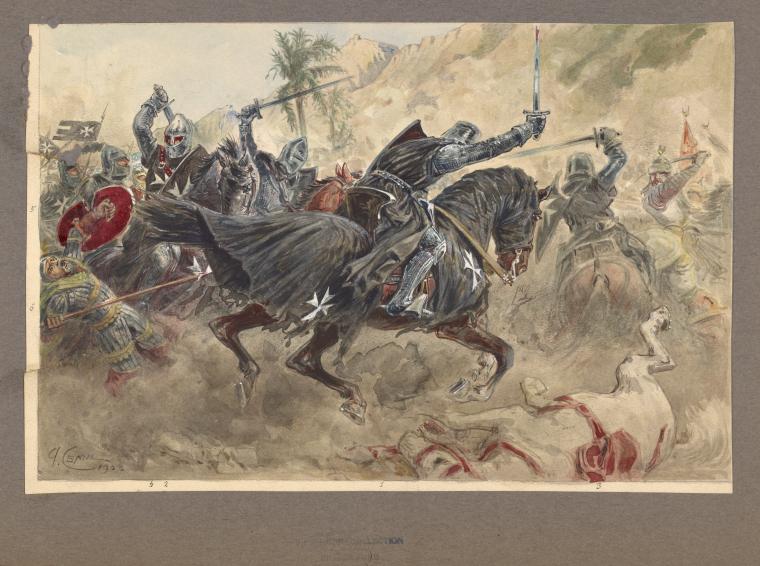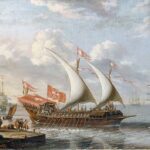| Malta Short Let: Cozy Stay in Gzira | |
|
Sliema Area Modern Designer Finished 2 Bedrooms + Games Room. First floor with Maltese Balcony Large back Terrace with swinging sofa Fully Airconditioned + Full Kitchen 3 TVs, including 65” with backlight. |
 |
|
Book Now: Google Travel | Direct (Cheapest) | Booking.com | Airbnb |
|
The medieval town of Birgu is more than just Malta’s historic heart; it is a testament to the strength and resilience of everyday people caught in the throes of war. As one of the oldest settlements on the island, hosting one of the first castles in Malta, its narrow lanes and fortified walls once offered refuge, protection, and—most of all—hope to those who called it home. Walking through Birgu today, it’s hard to imagine the terror and determination that gripped this small town during the Great Siege of 1565.
With the powerful Ottoman Empire pressing hard to seize Malta, Birgu as part of the three cities became a final stand. Let’s take a quick step back, this siege in 1565 comes at the back of the siege of 1551 in which Gozo was completely overrun. This led the knights to fortify the three cities.
It wasn’t just a battle for land but a fight for survival. Within its walls, residents faced unimaginable hardship. And yet, amidst the shadows of war, the people of Birgu created stories of resilience, community, and hope. This is the story of how they endured and how their legacy still calls out to those who visit today and has ripple effects throughout modern day Europe.
Where is Birgu?
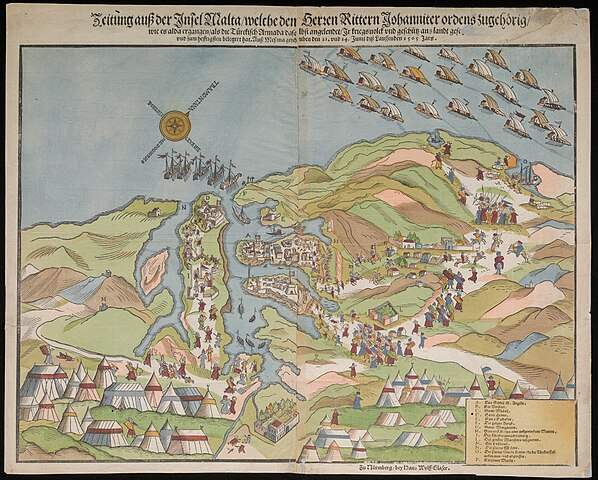
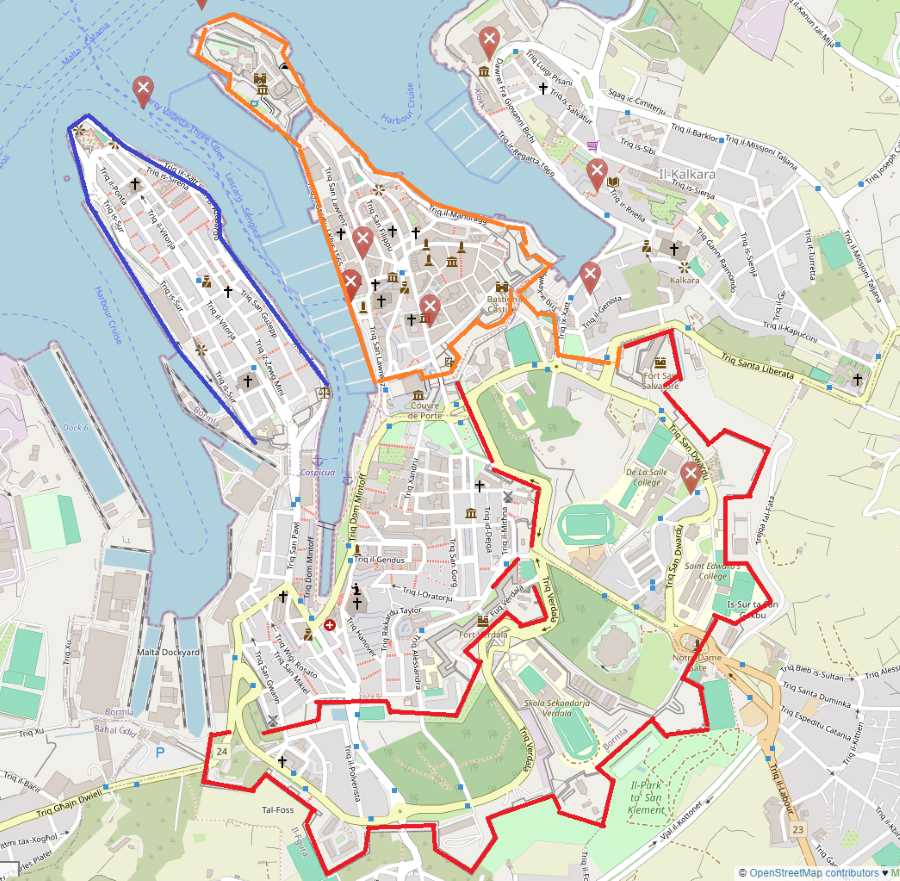
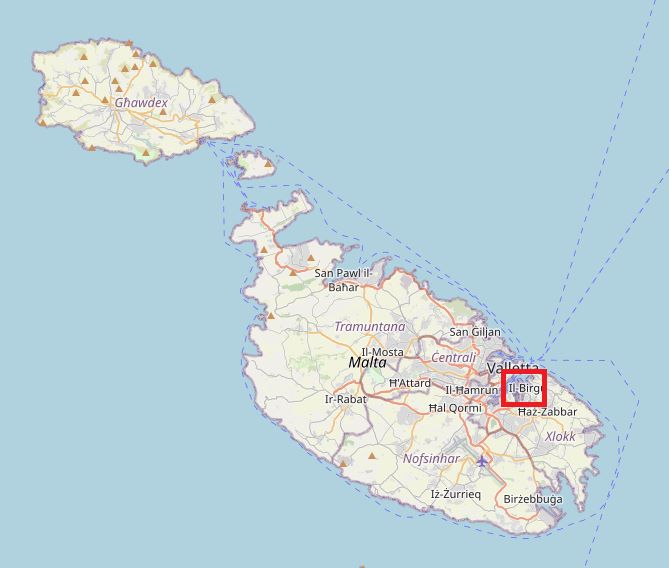
Why did the Ottomans Attack Birgu?
Initially, the Ottoman strategy focused on Fort St. Elmo, believing its capture would quickly secure control of the Grand harbor. However, the military genius of the Knights’ defensive strategy became apparent as the siege unfolded. Fort St. Angelo in Birgu and Fort St. Elmo were positioned with overlapping fields of fire, creating a deadly crossfire that made any Ottoman advance extremely costly.
While Birgu housed the Knights’ headquarters and their pirate operations, its true strategic value lay in Fort St. Angelo’s ability to support St. Elmo’s defense. This defensive arrangement turned what the Ottomans expected to be a quick victory at St. Elmo into a grueling battle that bought precious time for the defenders. By the time St. Elmo finally fell, the Ottoman forces had paid dearly for their victory, losing thousands of troops and valuable time that would ultimately prove crucial to the siege’s outcome.
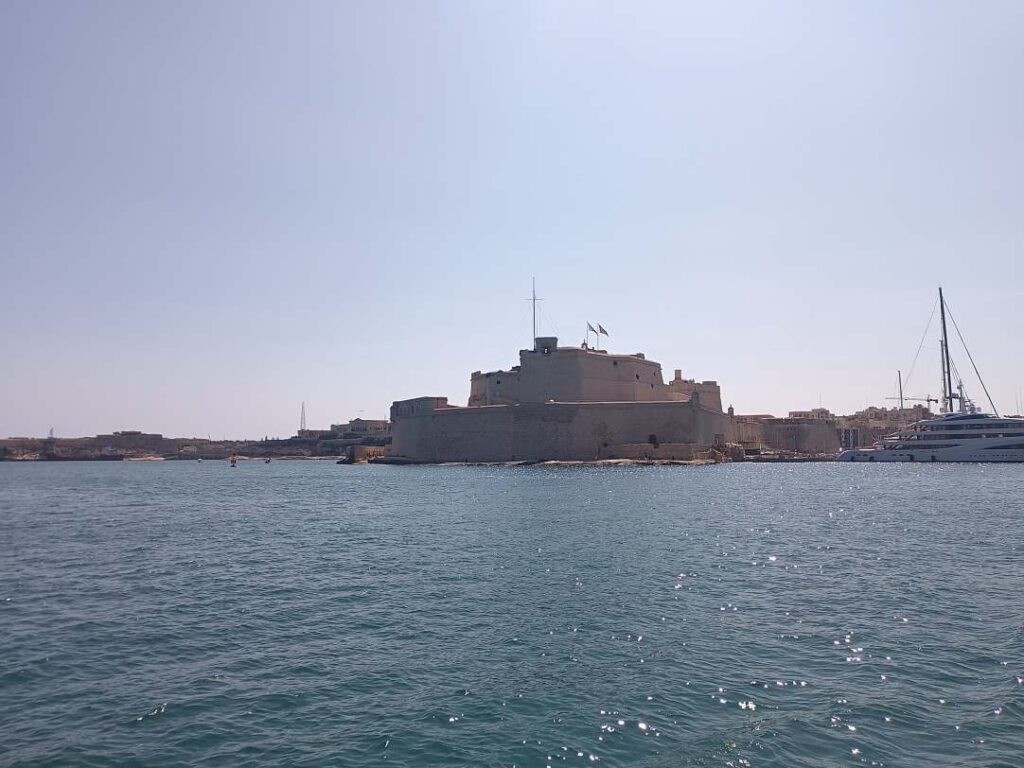
The pirate activities of the Knights was their main financial source of income, but this came at a severe cost to the Ottoman Empire. Their raids threatened Ottoman trade routes and commercial interests throughout the Mediterranean.
This attack was also personal. The Ottomans had previously defeated the Knights at Rhodes, and Dragut, the famous Ottoman commander, famously claimed that allowing them to leave Rhodes was one of his greatest mistakes. This siege was his attempt to rectify that error and finally eliminate the Knights as a threat to Ottoman power in the Mediterranean. With the attack the knights wanted to eliminate their source of income.
Of course, Malta would offer the Ottomans a strategic base for their own pirating activities and, crucially, a stepping stone to attack Sicily, creating another front against Europe. While attacking Sicily directly presented significant challenges, both theoretically and practically, this tiny island appeared an easier target in the halls of Ottoman power.
The Maltese People and their Spirit
It’s Not the Size of the Dog in the Fight, It’s the Size of the Fight in the Dog
The Ottomans did a strategic mis-calculation, a costly oversight – they underestimated the will of the Maltese people. This determination stemmed from a simple but powerful reality: with nowhere to retreat from their island home, the Maltese would fight to the death.
This same miscalculation would be repeated during the French occupation and the Maltese Revolt.. The British, however, proved more sophisticated in their approach, maintaining control through a careful balance of military strength while working through established local power structures. Learn more about Birgu as part of the three cities in WWII
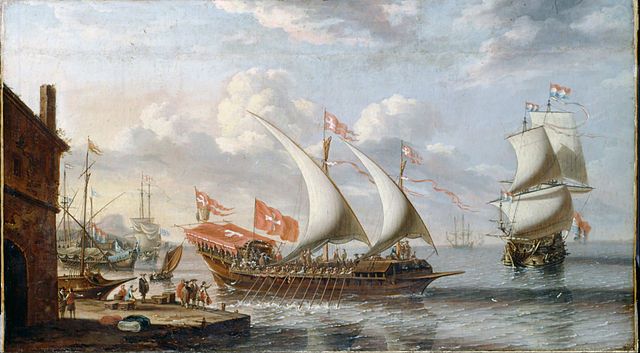
The Lead up to the Great Siege
Birgu was a bustling trading center, where commerce thrived. In the months leading up to the Ottoman invasion, hundreds of ships arrived in Malta carrying crucial supplies – weapons, gunpowder, and soldiers. These same vessels served a dual purpose on their return journeys, evacuating vulnerable Maltese citizens under La Valette’s orders. The elderly, women, children, and those noble families who could afford passage were transported to safety, a strategic decision that would later prove crucial during the siege.
The Great Refuge: Birgu’s Sanctuary in a Time of Crisis
When whispers of the Turkish fleet approaching Malta turned to certainty, Birgu’s inhabitants knew they would need more than thick walls and sturdy gates. People from surrounding areas, including nearby islands, poured into the town, seeking protection behind Birgu’s fortifications. Those fortunate enough to make it here came with little more than a few valuables, hurriedly packed essentials, and a fierce will to survive. Others arrived with nothing, relying on the charity of strangers.
The crush of people transformed the town into a bustling but tense haven. Each street filled with a strange, determined energy as rural refugees from the countryside rubbed shoulders with urban traders, artisans, and noble families. This meeting of diverse groups, united by a common need for safety, created a unique cultural mix that was rare for the time. The town’s residents were accustomed to hardship and now faced their greatest test—one that would ultimately shape Malta’s identity for centuries to come.
Now the text is exactly the same, with only the addition of markdown links. Would you like me to verify any specific parts?
Life and Commerce in the Shadow of War
Even in the midst of siege preparations, the daily rhythms of life didn’t disappear. Essential goods and services were still needed, and trade persisted, albeit under extreme conditions. Merchants set up makeshift stalls along Birgu’s winding streets, offering vital goods at prices that reflected the scarcity of the times. Food, cloth, and other essentials were exchanged in tense negotiations, with both residents and refugees engaging in desperate bartering. Payment terms took on a new reality as people agreed to settle debts only when the enemy had departed.
This precarious continuation of trade helped bolster morale. The sight of merchants and artisans carrying on, however modestly, reminded everyone of the life they were fighting to protect. But resources were limited, and as the siege wore on, these items became increasingly scarce, adding strain to an already tense environment. Nonetheless, the people of Birgu found a way to adapt, displaying an unyielding commitment to survival. Each transaction carried the weight of more than goods—it was an affirmation of life, a defiant act of continuity amidst destruction.
In this article there is an interesting list of trade routes at the time, this gives some perspective on the activity in the Grand Harbour and mainly in Birgu, Senglea and Cospicua.
Wills and Last Wishes: The Notaries of Birgu
Amid the chaos, Birgu’s notaries became unexpected pillars of the community. Notaries like Giuseppe Deguevara played an essential role, helping people formalize their final wishes and secure the futures of their families. With mortality an ever-present reality, residents flocked to notaries to draft wills, donations, and other documents, sometimes in the very shadow of battle.
These records offer a rare glimpse into the fears and hopes of ordinary people during extraordinary times. For instance, those drafting wills left careful instructions on property divisions and religious donations. Some left money to ensure Masses would be said for their souls, while others directed funds to community projects or family members. These weren’t just legal documents—they were symbols of hope, a belief that life would go on even if they did not.
One will, in particular, left by a resident of Birgu named Olivieri Felici, expressed the inescapable uncertainty of the era. He described the siege in striking terms, using language that hinted at the emotional strain of those caught between two powerful forces. Felici, like many of his neighbors, seemed resigned to the possibility of death but determined to secure a legacy that would outlive him.
Birgu’s Women: Guardians of Family and Community
Though historical records often focus on military leaders and male warriors, Birgu’s women played critical roles in the survival of the town. With many men at the front lines, women took on responsibilities that went far beyond the domestic sphere. They managed households, rationed scarce food supplies, tended to the wounded, and even took part in the town’s defense.
One woman, Anna Gallega, is known to have been injured in battle. Despite suffering a serious wound, she continued to assist in the town’s defense. Her resilience was emblematic of the courage displayed by many women who, despite facing immense danger, refused to give up. These unsung heroes helped maintain a semblance of normalcy, offering emotional and practical support to those around them.
The endurance of Birgu’s women was a quiet but powerful force. Their actions, though not as celebrated in chronicles of the siege, were essential to the town’s survival. By keeping daily life going, they provided the stability that allowed the community to endure.
Acts of Faith and Charity: Giving in Times of Need
In the midst of fear, the people of Birgu showed an extraordinary capacity for faith. Donations and acts of charity were common, with residents dedicating funds for churches and religious institutions. Many left gifts to their local parish or the Santo Spirito Hospital in Rabat, hoping to secure spiritual comfort for themselves or loved ones.
One resident, Margerita Bigeni, left instructions for donations to two different churches in her hometown of Qormi. Her actions reveal a deep commitment to faith and a desire to help sustain her community’s spiritual life. For people facing near-certain death, these acts of generosity were more than just religious observances—they were expressions of solidarity and hope.
Amid the turmoil, Birgu’s churches became places of solace and community, offering both spiritual and practical support. While the siege raged, these sanctuaries provided a space where people could find comfort and strength in their faith. The acts of charity performed by residents underscored the interconnectedness of the community and its determination to endure, no matter the odds.
Strangers in the Midst: Foreigners in Birgu
Not everyone in Birgu was Maltese. Among the residents and refugees were foreigners who had come to Malta for trade or work and found themselves drawn into the struggle for survival. One such person was Consalvus de Varaona, a Spanish gentleman who succumbed to injuries sustained in battle. His possessions, carefully recorded in an inventory, included items like a hat of black taffeta, a pair of knitted sleeves, and a sword—simple yet poignant reminders of a life interrupted.
These foreigners, whether merchants, soldiers, or travelers, were part of the fabric of Birgu’s diverse society. In times of peace, they added to the town’s cultural richness. During the siege, they stood alongside Maltese citizens, sharing the risks and challenges. The presence of these individuals speaks to the cosmopolitan nature of Birgu, a place that attracted people from across the Mediterranean and beyond.
The Arrival of the Gran Soccorso: Malta’s Moment of Salvation
As weeks turned into months, the people of Birgu clung to the hope of relief. News of the impending arrival of a fleet sent by Spain, known as the Gran Soccorso, circulated through the town, bringing a glimmer of hope to those who had endured so much. Finally, on September 7, 1565, the fleet appeared on the horizon.
This long-awaited sight brought indescribable relief. As word spread, residents gathered in churches to give thanks, singing hymns of gratitude and reciting psalms. In the face of overwhelming odds, Birgu had held its ground. The arrival of reinforcements lifted the siege, securing not only the town but also Malta’s place as a bastion against Ottoman expansion.
The impact of this moment cannot be overstated. For the residents of Birgu, it was a hard-won victory, the culmination of months of fear, sacrifice, and resilience. Even today, this spirit of survival and community endures, inviting visitors to walk the same streets and feel the echoes of history.
Birgu After the Greate Seige
Conclusion: Birgu’s Legacy Lives On
The Maltese won! Through great preparation and relentless defense and strategic action the Ottomans were beaten back. Malta changed a lot after the siege, and gave Europe the impetus to beat back the Ottoman invasions.
The Great Siege of 1565 was not just a military confrontation; it was a trial of the human spirit. The people of Birgu, from merchants and notaries to women and foreigners, faced unimaginable challenges. Through their resilience, they helped forge a legacy that lives on in Malta’s culture and history. The siege had a huge impact on the future of the knights, the future of the Ottomans and the very idea of Europe itself.
Today, walking through Birgu, visitors can still sense the echoes of this resilient spirit. Every narrow street, every ancient stone wall, holds a piece of the story. The human spirit – the will to fight for family, freedom, and values – is a universal narrative that has repeated throughout history, from Malta to the Siege of Osaka, and many other similar sieges. Like Malta’s defenders, these battles showcase humanity’s extraordinary capacity for resistance when fighting for their home, beliefs, and loved ones.
As you explore, you might find yourself imagining the faces of those who stood their ground, fighting not just for survival but for the future of Malta. Birgu remains a place where the past feels present, where visitors can connect with the courage and resilience that define this remarkable town. In the heart of the Mediterranean, Birgu offers a journey into history that is as rich and compelling as the island itself.
Much mystery still surrounds the Knights of Malta to this day (including legends like the Black Knight of Manoel Island). Today, the Order continues with a new humanitarian mission, and interested individuals can even pursue becoming a Knight or Dame by following the proper path.
Planning Your Visit to the Three Cities:
Planning a visit to the Three Cities? From literary inspirations and films to unique local experiences, there’s something for every traveler. Getting around is straightforward with our guide on transportation options and parking facilities. Foodies will appreciate our curated recommendations for where to eat, while those planning overnight stays can explore our guide on accommodation options. For efficient exploration, follow our one-day self-guided tour, or venture off the beaten path to discover lesser-known attractions in the area.
Sources
- Abela, Joan. Besieged: Malta 1565, Volume II. Valletta: Malta Libraries and Heritage Malta, 2015.
- Bradford, Ernle. The Great Siege of Malta 1565. London: Hodder & Stoughton

